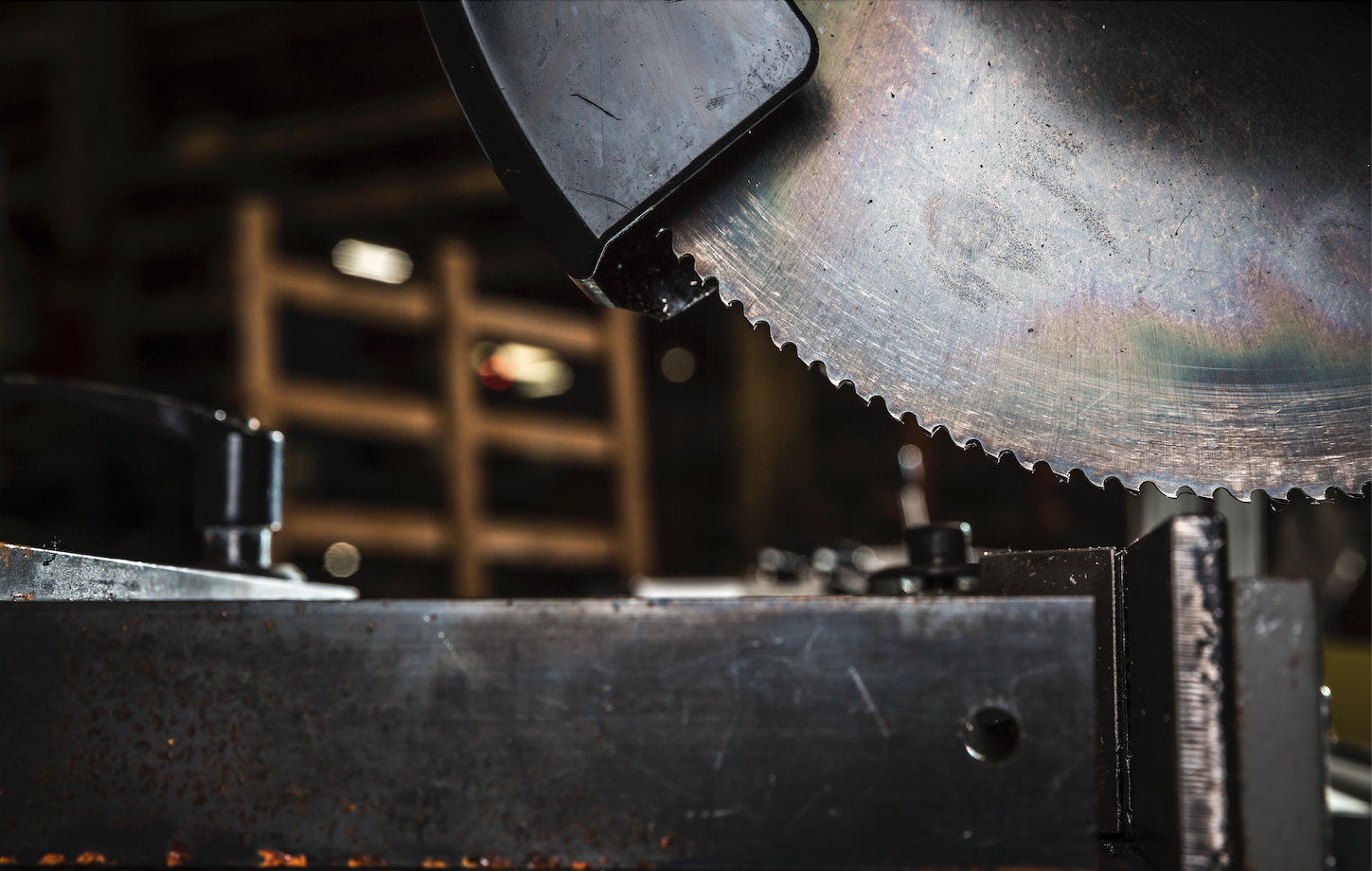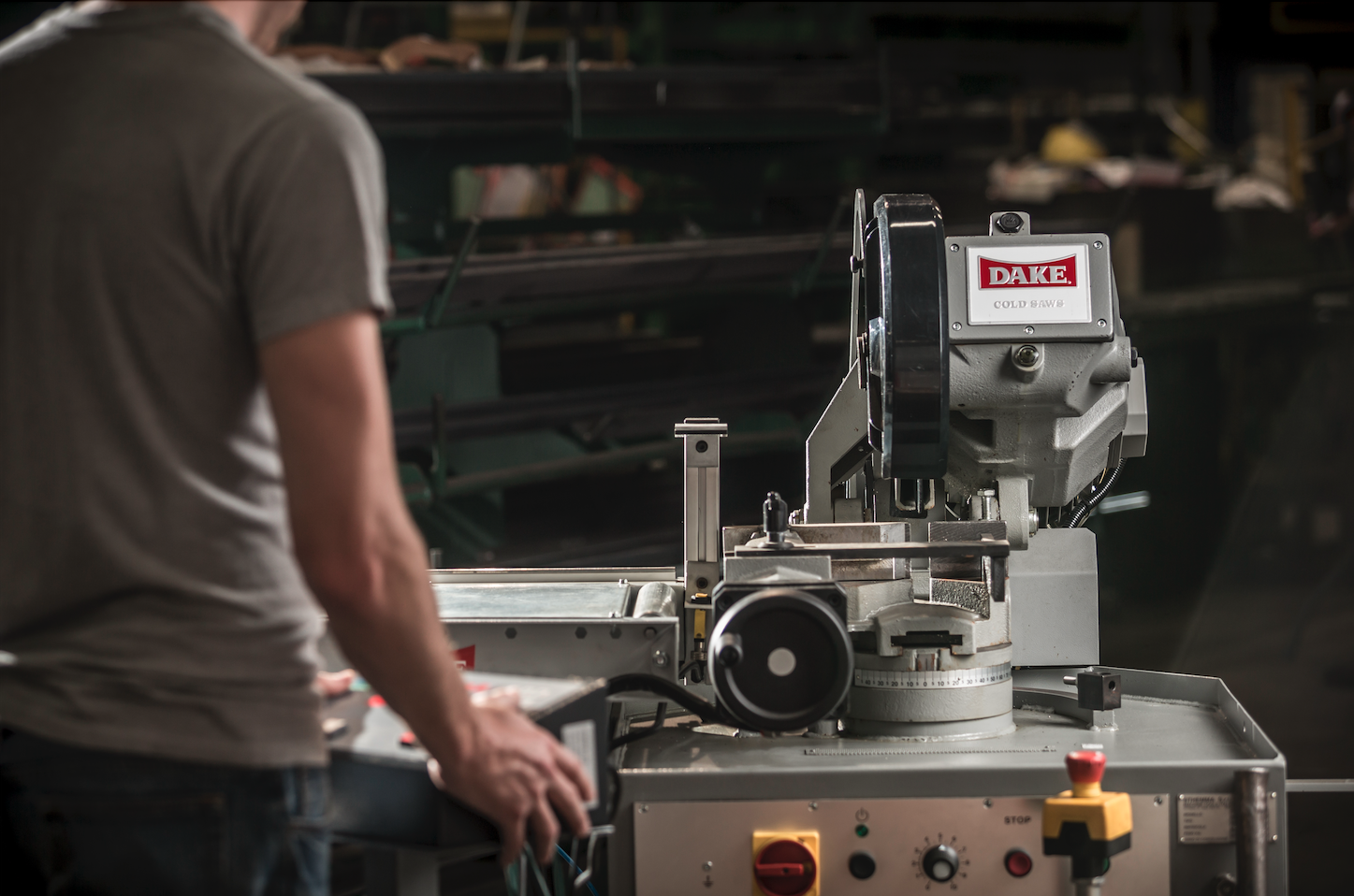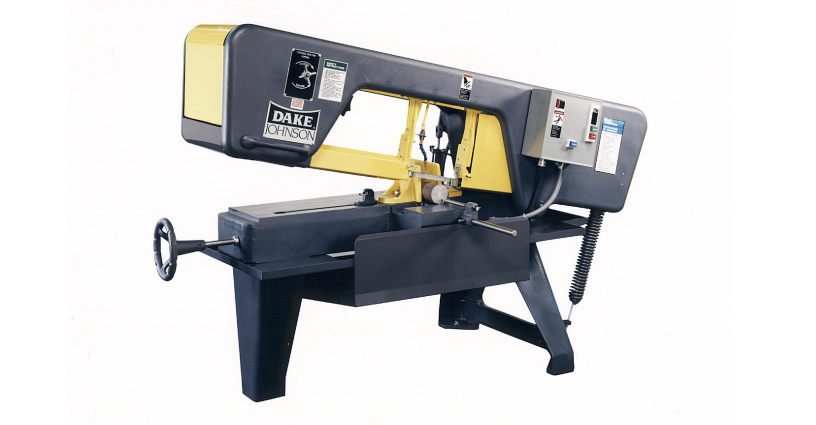Just like any other piece of equipment, your cold saw requires regular care and maintenance to ensure a long productive life in your shop. Keeping the machine clean and maintained by following a preventive maintenance schedule will help you avoid those costly repairs and lost production hours caused by a major breakdown.
Here are some suggestions for extending the life of your cold saw:
Remove the chips from the saw's vise
It sounds sensible and straightforward, but it's a step that saw operators often skip. Maybe it's because they are in a hurry or it doesn't seem all that important. But allowing the chips to build-up will eventually prevent the vise's moving parts from…well…moving.
Make it a point to remind everyone who uses your saw to take the time to clean the chips away when they are done, if for no other reason than as a courtesy to the next person who uses it.
Do not skip regular maintenance
Your cold saw is made up of moving parts that must be lubricated at all times. Skipping your regular maintenance will result in downtime and a shorter life for an expensive machine that adds value to your operation.
Replace any worn parts immediately
Cold saws are precision cutting machines. As such, you will need to replace worn parts quickly so that it continues to be precise. Make sure you replace everything that caused a problem. For example, don't just change a belt if the pulley is also worn out.
Frayed wires are more than a safety hazard
A bad electrical wire is hazardous on its own. Add flying metal chips and spewing coolant to the mix, and it's an injury waiting to happen. A secondary issue could be the cold saw shorting out and causing significant damage to the machine. Prevent all of this by changing wires and cords that are cut or frayed.
Clean the coolant and top off the tank
Use a special oil-cleaning rag and blot it on the top of the coolant. This should remove the surface oil. Then, take something like a kitty litter scoop and take out the accumulated metal. Add some fresh water-soluble coolant to bring it to an optimal level.
In some cases, your coolant may be so dirty that you must replace it. When that happens, you'll need to pump out the old coolant, clean the tank, and add a fresh mixture.
Maximize the life of your blades
Without a doubt, extending the life of your saw blades will contribute to your productivity and the bottom line. Circular saw blades with carbide tips are ideal for high production metal sawing, but they are expensive. So, if you are resharpening and replacing them frequently, the increased productivity will be offset by those costs.
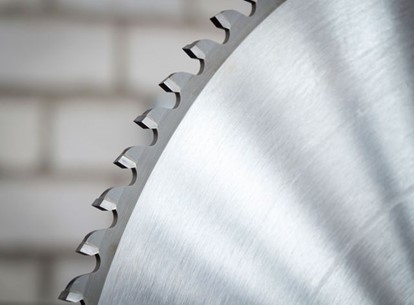
Carbide-tipped circular saw blade—Photo Credit: Universal Tool Sharpening
Here are some suggestions for getting the most out of your blades and your cold saw:
- Handle with care: Even though carbide is a very hard material, it is also brittle and chips easily. Carbide tips are often damaged from reckless handling, and damage to just one tooth can cause the entire blade to wear faster, significantly reducing its life. Take special care when storing them, moving them, and mounting them on the machine.
- Find the correct feeds and speeds: Find the right balance between the speed (RPM) of the blade and the rate at which the blade is being fed into the material. If the speed is too high, the carbide will wear faster, so slow down the speed and increase the chip load somewhat to maintain productivity. However, don't force the blade into the material; allow it to determine the chip load.
- Use a blade with the proper tooth spacing: Always use a blade with the right tooth spacing for the material's size and shape. A general rule of thumb is that there should not be more than six teeth in the cut. You can get away with breaking the rule if you are only cutting a few pieces. However, on long production runs, change the blade to have the best tooth spacing for the material.
- Mount the saw blade securely: Rigidity is of utmost importance in carbide sawing. Since carbide is brittle, vibration caused by an improperly secured saw blade could result in broken carbide. When you mount the blade, rotate it in the opposite direction of the blade until the drive pins make contact with the holes (see below). That way, the blade cannot slip when it engages the material.
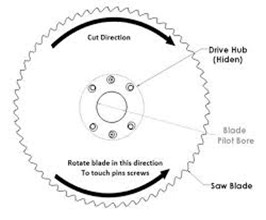
Image Credit: The Sawing Academy
Ensure the material is clamped correctly: Once again, rigidity comes into play when clamping the material. V-clamps provide a more secure clamping method for round stock. If you are cutting irregular-shaped material, orient the part so that the cross-section changes minimally throughout the cut.
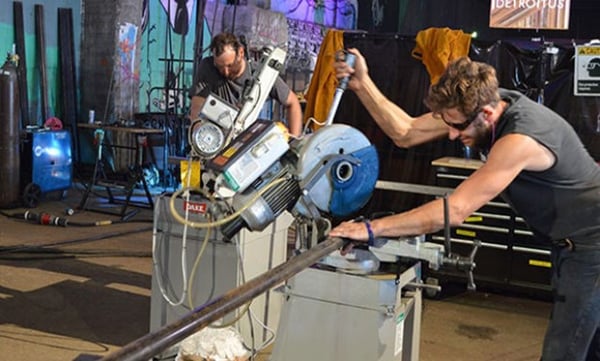
A long metal bar securely clamped in the Dake Technics 350A Semi-Automatic Cold Saw
Ensure a long life from your cold saw by buying the very best
Our metalworking cold saws are rugged and rigid, reducing chatter and vibration for a precision cut on all metal types. All three models—manual, semiautomatic, and automatic—have heavy-duty spindles and gearbox assemblies for years of trouble-free performance.
For more information, fill out our contact form, call us at 1-800-937-3253, or email us.
-1.jpg?width=1200&height=525&name=DAKE003_%20Logos_Red%20(002)-1.jpg)

